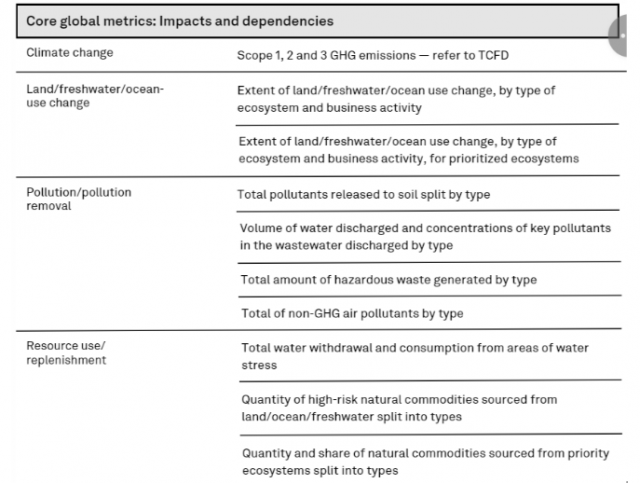Taskforce on Nature-related Financial Disclosures (TNFD), a global initiative, has developed an elaborate framework to evaluate and disclose nature-related risks and opportunities for businesses and organizations. In March 2024, the TNFD released its fourth and final draft that outlines the roadmap to disclosing the final recommendations by companies. This revised draft consists of new core metrics that are minimum disclosure requirements for companies and investors as TNFD considers them material for businesses across different sectors.
This draft will be a crucial step in TNFD reporting for the following reasons:
Clear Guidelines: The 15 core metrics in TNFD framework are useful for organizations to evaluate their performances and make informed decisions. These metrics will allow companies to maintain transparency, thus building trust with stakeholders.
Reduce Risks and Increase Opportunities: As core metrics are uniform across industries, organizations need to assess both risks and opportunities arising from different material topics such as climate change and biodiversity loss. This analysis will be useful for investors as well as organizations to evaluate their risk exposure and find solutions to mitigate these risks, thus creating value through sustainable business practices.
Comply with Regulatory Requirements: The new insights from core metrics will help organizations to comply with the regulatory requirements pertaining to nature and environmental issues.
What are the core metrics in TNFD?
The TNFD framework has released 15 core metrics and an additional industry-specific disclosure metric applicable to industries globally. To align with the TNFD framework, organizations have to provide disclosures based on these core metrics. An organization can also determine other metrics or frameworks to align with the LEAP (Locate, Evaluate, Assess and Prepare) approach, a process that outlines measures for nature-related risks.
Core Global Metrics: Risks and Opportunities

Core Global Metrics: Impacts and Dependencies

Which frameworks can be integrated with TNFD?
The latest TNFD guidelines support multiple sustainability frameworks that help organizations provide disclosures on their nature-related impacts. TNFD disclosures aligns with the following frameworks:
Global Reporting Initiative (GRI): GRI is a voluntary sustainability reporting framework that enables an organization to report on various non-financial disclosures. There are several indicators related to climate, biodiversity and ecosystems.
Task Force on Climate-Related Financial Disclosures (TCFD): Established by the Financial Stability Board, TCFD is a popular sustainability framework used by organizations to report on climate-related financial disclosures. The framework encourages companies to provide disclosure on physical and transitional risks associated with climate change that affects biodiversity and ecosystems.
Sustainable Development Goals (SDGs): In 2015, the United Nations adopted 17 interconnected goals that aim to address various global challenges such as poverty, hunger, education and more. There are many goals including Life Below Water (Goal 14) and Life on Land (Goal 15) that are related to biodiversity and ecosystems. Organizations have pledged to report on how they are contributing to SDGs, especially those related to biodiversity.
Convention on Biological Diversity (CBD): CBD is a is an international treaty aimed at promoting the conservation of biological diversity, the sustainable use of its components, and the fair and equitable sharing of the benefits arising from the use of genetic resources. According to Target 15 of the Global Biodiversity Framework, organizations have to incorporate biodiversity during decision-making processes and report on their biodiversity impact.
What next?
The TNFD closely follows the model established by the TCFD, which focuses on climate-related disclosures. As the TNFD framework transitions from development to implementation, stakeholders concerned with biodiversity can draw valuable lessons from the TCFD’s experience. For instance:
- Companies: Since the TCFD issued its final recommendations in 2017, over 3,900 companies have endorsed its guidelines, with most utilizing the framework to enhance their disclosures.
- Regulation: Global corporate disclosure regulations frequently reference the TCFD’s recommendations.
- Shareholders: Investors are increasingly focused on managing risks related to nature and biodiversity within their portfolios, seeking guidance on effective metrics. Initiatives like Nature Action 100, inspired by Climate Action 100+, aim to drive corporate action to address nature and biodiversity loss. Many founders of Nature Action 100 are also involved with the TNFD Forum.
With the TNFD’s latest disclosure metrics and the forthcoming final recommendations in September, businesses and investors will have a unified approach to addressing nature and biodiversity loss and developing strategies that promote positive environmental outcomes.





